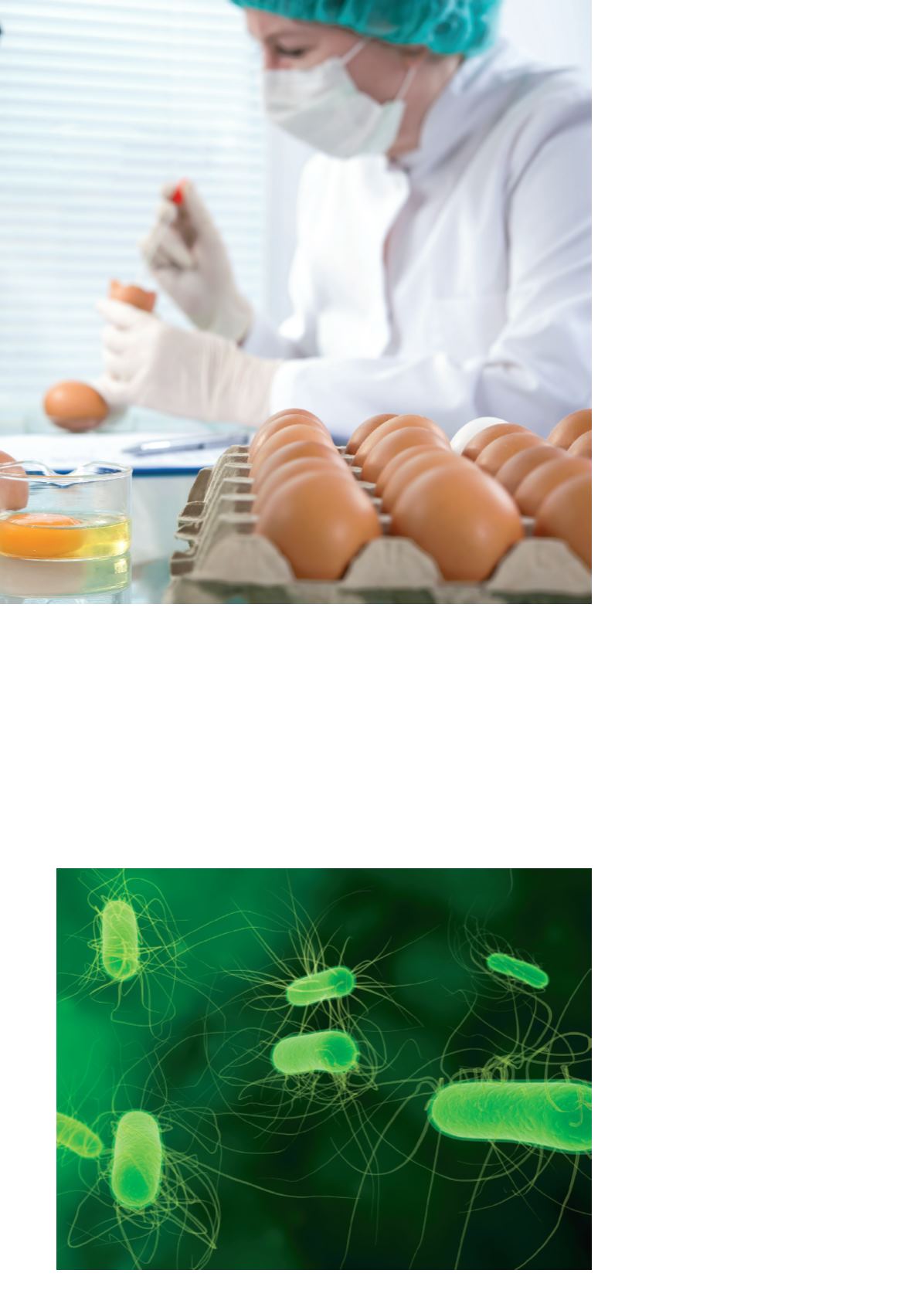

Escherichia coli:
lives in the intestines
of healthy mammals and in still water and
can contaminate fruit, vegetables, raw or
undercooked meat, and non-pasteurised
milk. Produces stomach pain, lack of
appetite, vomiting and diarrhoea.
Toxoplasma gondii:
in most cases,
these infections go unnoticed since the
symptoms are similar to a flu and occur
only once in a lifetime. Infection can cause
problems, particularly to pregnant women
since it affects the foetus.
It is caused by eating food contaminated
with spores from cat excrements that
contaminate raw or undercooked meat and
also from goat milk.
Clostridium
perfrigens:
proliferates in cooked food that is left to
sit out warm for a long period of time. The
small number of germs multiply rapidly with
heat and produce crossed-contamination:
the cooked food is in contact with
contaminated surfaces, particularly cutting
boards. Contamination is frequent in meat
and derivatives.
Causes stomach cramps and diarrhoea
and disappears in 24 hours.
Clostridium
botulinum:
this
bacillus produces a toxin that affects the
nervous system. The symptoms appear
18 to 36 hours after ingestion. It is very
serious and causes weakness, dizziness,
double-vision, difficulties in speaking and
breathing. It starts from the top up, from the
shoulders down.
Intoxication can be caused by homemade
preserves and by honey.
Campylobacter:
is present in
the intestines of animals and humans,
contaminating non-pasteurised milk, raw
or undercooked meat, and contaminated
water. It can lead to vomiting, stomach pain,
and diarrhoea, sometimes with blood.
Anisakis:
worms that contaminate raw
fish that can cause parasites in humans.
Described in depth in themagazine (Anisakis,
the hidden parasite, Nieves Casado
Escribano- Parasitology, Universidad Alcalá).
PREVENTING FOOD INTOXICATION
Agencia
Española
de
Consumo,
Seguridad Alimentaria y Nutrición (Spanish
Consumption, Food Safety and Nutrition
Agency [AECOSAN, Spanish acronym]) has
published a compendium of precautions to
prevent food poisoning:


















